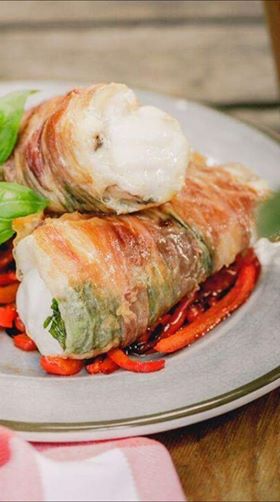Wild Garlic Season
Even though I’m writing this in the middle of the Coronavirus outbreak with everyone hopefully self-isolating, Nature knows Spring is here. Despite the virus, the plants and trees are bursting with new growth and there’s foraging to be done particularly of wild garlic and then lots to do with it in the kitchen. Also known as ramsons, this perennial comes back every year, some years more garlicky than others depending on the weather and they’ll last well into the spring and early summer.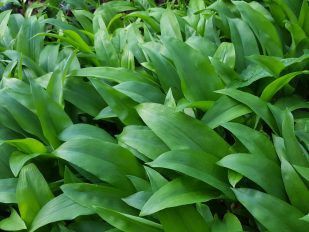
A dog walk through Hoodown or over Gallant’s Bower, in fact anywhere around where we live, brings the unmistakeable smell of wild garlic, vast swathes of the wide dark green leaves in weedy abundance and once the flowers are out, a massive carpet of white heads. Breathtaking on many levels. It’s definitely use it or lose it though, as once the summer arrives, the flowers disappear and the plant heads back underground until next spring.
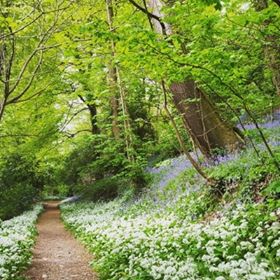
(When you’re picking your wild garlic, don’t mix in any bluebell leaves or flowers – they do grow side by side and the bluebells are poisonous.)
Wild garlic is full of benefits as well as being free. Much like any green vegetable, wild garlic will boost your A&C vitamins, increase your mineral intake with calcium, iron and sodium and is said to be a natural antibacterial. It also gets you into the outdoors if you’re going to use it as you won’t see it in the shops, although Riverford do put it in their vegetable boxes now and then. If like us, you have it in your garden, you won’t have far to go to collect it – it’s literally on our doorstep. Remember to only take the leaves and not the whole bulb so it comes back year after year.
There are many ways of using this edible resource; here are a few of our favourites, not so much recipes – just wash the leaves and flowers, rinse, dry and chuck them in. A real flavour of spring –
- Pick the individual white flowers of the big heads and scatter them over soup or salads as an edible garnish.
- Use the shredded leaves or flowers in a savoury cheese scone, cornbread or flat bread mix for an added oniony hit.
- Add some of the leaves to a watercress or spinach soup for an added vitamin hit.
- Finely shred some of the leaves and stir into some mayonnaise with some finely grated lemon zest – fantastic with fried or grilled fish or in a potato salad.
- Stir the fresh leaves through a hot bean stew or a spicy lentil dhal to wilt down.
- Mix some of the shredded leaves into a potato and onion tortilla before cooking
- Stir it into risottos
- Whizz with a hand blender into a vinaigrette for a super-green salad dressing.
- Make into a pesto instead of basil – use almonds or hazelnuts if pine nuts are too pricey.
- Wilt with cabbage, leeks or spinach
- Whizz it up with some olive oil to make a green, err, sludge and use it on pizzas or foccaccias
Here are a couple of our favourite recipes for using this zingy supergreen –
White and Green Bean Salad with Wild Garlic Pesto
Serves 4-6
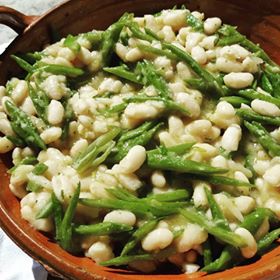
1 x 400g tin white beans – cannellini, haricot or butter beans – rinsed and drained
200g green beans, trimmed and shredded
4tbsp olive oil
Large handful of wild garlic leaves, shredded
30g pinenuts or walnuts or flaked almonds – whichever you have
50g hard goats cheese or pecorino or parmesan, finely grated
Finely grated zest 1 lemon and the juice of half of the lemon
Salt & Pepper
- Steam the green beans until tender. Take out of the pan and cool them down. (You can also boil the beans or whack them in the microwave – whichever works for you).
- Put the white beans and the cooked and cooled green beans in a large bowl.
- Put the rest of the ingredients in a food processor and blitz them until smooth. Or use a hand blender and a jug or a pestle & mortar to do this.
- Taste for seasoning and when it’s just as you want it, add the pesto to the beans in the bowl and toss together gently. I use a couple of wooden spoons to do this so you don’t bash up the tinned beans.
- Serve as a vegetarian main or as a side to some grilled or roast lamb or chicken. BTW if you make a lot of the pesto (and you may as well as there’s no shortage of leaves!) freeze it in ice cube trays and when frozen put the cubes in a sealed box or bag in the freezer, and then use them in soups, stews, pasta dishes or risottos when you’re short of time.
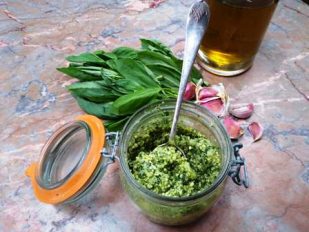
Monkfish with Parma Ham & Wild Garlic
Serves 2
2 pieces of monkfish fillet, trimmed – about 180g each in weight
4 pieces Parma ham
4 large wild garlic leaves, rinsed and dried
1tbsp oil
Salt and pepper
- Heat the oven to 210C/Gas 7.
- Put the ham on a chopping board or clean work surface so you have two lots of 2 pieces overlapping each other.
- Put 2 wild garlic leaves on each of the overlapping ham slices. Sprinkle over a little seasoning of salt and pepper.
- Put 1 piece of monkfish at the end of each of the ham/garlic piles and wrap them up tightly with the seal at the bottom.
- Put the monkfish parcels in a small roasting tin or ovenproof frying pan and drizzle over the olive oil.
- Put the pan in the oven and cook until the fish is firm and white and the ham has crisped up in the oven. This will take about 12-15 minutes depending on the thickness of the fish.
- Serve at once with the juices from the pan, some sautéed potatoes and a green salad.
